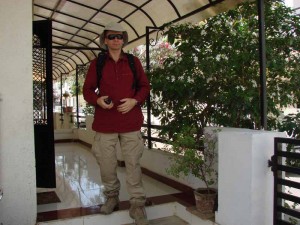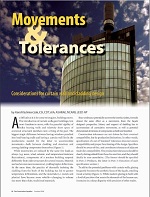Facade Engineering University
Facade Engineering Education – Building Enclosures Sciences and Technology. The seminars focus on areas typically overlooked by architects and engineers in the process of building envelope design. The topics are chosen on basis of observations derived from both forensic investigations of failed assemblies, FEA simulations, and peer reviews of architectural documentation. Participants are encouraged to ask questions and explore their respective areas of interest even at the risk of a lecture wandering off the main topic.
Contact us to schedule a seminar.The topics listed below are available immediately. Others may be custom prepared.
1. Principles of Facade Design is generally recommended as a starter for the series. The lecture discusses design and engineering of building enclosures. Primary facade design principles are classified and demonstrated with emphasis on a structural safety and a holistic approach. Table of contents includes: Classification of Facade Functions, Definitions, Environmental Protection, Ergonomics, Access Provisions, Feasibility, General Explanation of Facade Design Principles, Structural Resistance, Waterproofing, Condensation Control, Snow and Icing, Thermal Insulation, Shading, Durability, Wildlife Proofing, Flood Proofing, Noise Mitigation, Security, Dirt Build-up Prevention, Fire and Smoke Proofing, Economy, Hints on choosing your team, and Sources of Information. Read more. Also, see the fragment recorded in Atlanta, GA on YouTube.
DVD is available for purchase! Read more.
The trailer to this seminar is here:
The video cannot be shown at the moment. Please try again later.
2. Curtain walls presents curtain walls, their fundamental classification, and challenges and solutions associated with them. The structural role of curtain walls, fundamental classification of curtain walls, glazing types and their modes of failures are analyzed, relevant building code requirements, tests of curtain walls, and main sources of water leakage are discussed. Read more.
DVD is available for purchase! Read more.
The trailer to this seminar is here:
3. Thermal Engineering in Building Envelope Design describes the means and goals of energy engineering with respect to building envelopes: heat transfer and condensation risk assessment procedures and presents the basic thermodynamics concepts with special focus on the areas typically overlooked by architects. Read more.
4. Sloped glazing presents typical challenges and solutions associated with sloped glazing and skylights. Read more.
5. Hot and Humid Climate and Hurricane considerations in Building Enclosure Designpresents non-obvious aspects of building enclosure design in hot and humid climates frequented by hurricanes. Requested most often by foreign architects planning to design in the Gulf region. Read more.
DVD is available for purchase! Read more.
The trailer to this seminar is here:
6. Storefronts presents challenges associated with the outdated design and engineering of the glazed doors and windows in a fixed glazing. Focuses on comparison of performance of similar products and discussion on details. Highly technical and recommended chiefly for education of other building enclosure consultants.
7. Curtain Wall “Detail Digest” discusses common errors in details of cladding comparing incorrect and correct solutions. Highly technical and recommended chiefly for education of other building enclosure consultants.
8. FaÁade Engineering With Glass addresses the typical architectural questions: how to use the glass to achieve the desired architectural goals, and what advances in technology help to shape the modern architecture. Talks about spectrally selective coatings, insulative glass, acoustic glass, security glass, self-cleaning glass, photovoltaic array s, anti-reflective glass, switchable glass, and low-iron glass, structural characteristics of glass, as well as LED media walls. Discusses challenges such as misaligned performance expectations, obsolete codes and standards, production size limits, dimensional tolerances, energy and security misconceptions, glare, and life expectancy, cladding two-directionally curved facades. Read more.
9. EIFS discusses the exterior insulation systems in a way that would put your E&O insurer at ease. If you are like most architects, you have probably already attended at least two types of seminars: provided either by manufacturers or forensic experts, and they made your head spin. Most likely, neither of them proved helpful in your design system choice. Kaz fills this gap by his unbiased, factual discussion of pros and cons associated with EIFS. He describes the advantages such as low initial cost and energy consumption as well as the disadvantages such as the high reliance on a field workmanship and the substrate sensitivity. Typical caveats are demonstrated on examples from his forensic practice, and illustrated by examples of a proper construction documentation for your benefit.
10. Greening Building Envelopes discusses sustainability of building envelopes the way nobody has yet examined the subject before. This is as different from the average bromidic sustainability seminar, as it gets. Reid will tell you how he has saved millions of dollars by improving the buildings he manages. Kaz will focus on the most overlooked scientific aspects of energy improvements, and show lessons learned pertinent to the hot and humid climate.
Today, the real-estate and construction industry focuses on two new buzzwords: “Green” and “Building Envelope.” The industry also looks for savings, and what can be more economical and greener than prolonging the technical life of the existing structures? We will present several case examples of troubleshooting and preserving value of building envelopes of large buildings, which, often built wrong from the start, are typically the most expensive and most maintenance-demanding part of a building. We will show successes and lessons learned in reducing energy use and addressing persistent failures. We will also address relevant energy regulations pertaining to the existing buildings in Florida.
Learning Objectives: -Often Overlooked Secondary Consequences of Energy Upgrades -Combining Energy Upgrades with Renovations. -Diagnosis of Building Enclosures: Tools of the Trade. (MacGyverizm). -Do you Know Where Your Money Went? Tracking Energy Costs.
Speakers:
Mr. W. Reid Morgan, P.E. is a Physical Plant Director at Broward Campus of the Florida Atlantic University. He manages several educational buildings, including two high-rise towers. He is a civil engineer by education with a BS from the University of Maryland, College Park. He worked ten years in heavy construction managing foundations and concrete techniques for wet underground structures, such as subway tunnels and multi-storied basement in NY, Wash., DC, Philadelphia and Dallas. This early introduction into the negative effects of water leaking through "solid" walls has been a lifelong challenge of determining the solutions to pervious to impervious phenomenon. As he progressed into general construction and now maintenance management issues, the long term effects are not only costly from life cycle of structures, but the total operating costs for HVAC systems. There is a correlation between humidity outside and how it gets inside via the building envelop, doors, windows and sometimes roofs. He has found solutions in the most curious of areas, such as measuring long term effects of humidity been left in buildings when unoccupied. He has saved many thousands of dollars for FAU and others by examining the existing "as built" drawings for oversight of insulation, or the lack of it; HVAC systems that are oversized or undersized. He has quantified how different lighting and computer systems has changed the HVAC systems over the last 30 years, and yet we have plenty of buildings that had minimum of modifications over the years. His speaking engagements have been from lecturing to engineering and architectural students at FAU, APPA presentations and local chapter of IFMA and BOMA. He also has lectured about the benefits of solar and LED fixtures to community and civic groups.
Mr. Karol Kazmierczak (Kaz) M.Sc. is a Facade Physician. He cares for ailing building facades. On the average day you may spot him climbing a skyscraper or crawling dusty roof cavities, and on the average night he wanders your roof with a thermal imager searching for rain leaks. He specializes in high-rise buildings, worked with facades of over 400 buildings located on two continents, in miscellaneous climates, and has 17 years of facade engineering experience diversified among building enclosure technical design, consulting, construction inspections, and field investigations. He no longer practices facade engineering; instead he practices MacGyver engineering by developing custom procedures and tools to diagnose failures of existing buildings. He runs a blog at http://www.facade-doctor.com/FacadeDoctor/ which is as boring as his profession.








 Condensation Risk Assessment
Condensation Risk Assessment Facade Access
Facade Access Facade Engineering. How To Design a Functional Building Enclosure
Facade Engineering. How To Design a Functional Building Enclosure Facade Impact Resistance Manual
Facade Impact Resistance Manual Foggy Glass Disease
Foggy Glass Disease How To Write and Read a Forensic Report
How To Write and Read a Forensic Report Movements and Tolerances
Movements and Tolerances Review of Curtain Walls, Focusing on Design Problems and Solutions
Review of Curtain Walls, Focusing on Design Problems and Solutions Transitions: How to Design Facade Interfaces
Transitions: How to Design Facade Interfaces When You Need A Window – Solar Design
When You Need A Window – Solar Design